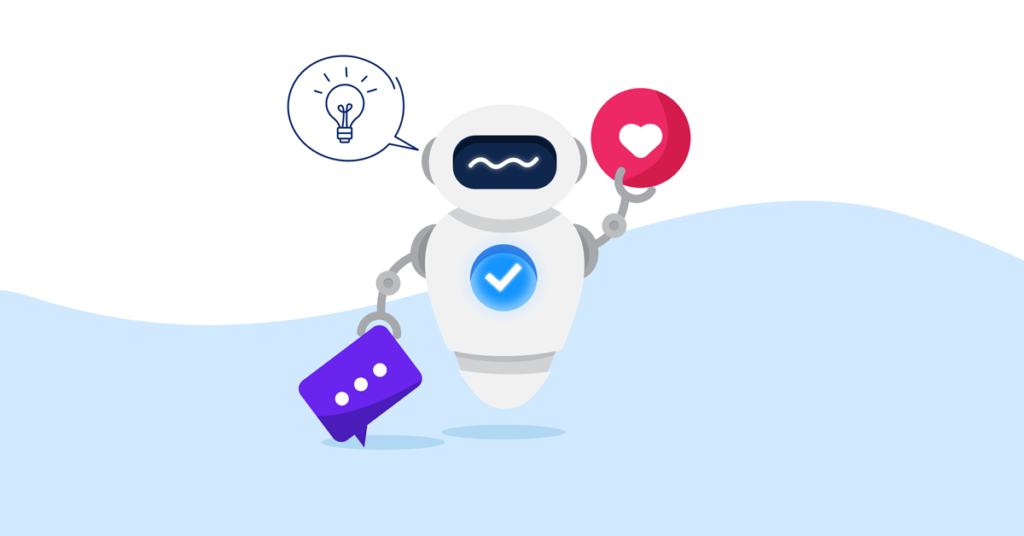In today’s fast-paced digital landscape, staying ahead of the curve requires more than just keeping an eye on your competitors or monitoring media mentions manually. This is where media intelligence platforms come into play, revolutionizing the way businesses gather, analyze, and utilize data from various media sources. From tracking brand mentions to analyzing consumer sentiment, these platforms offer a plethora of features designed to provide actionable insights that drive strategic decision-making.
Introduction to Media Intelligence Platforms

1. What are media intelligence platforms?
Media intelligence platforms are sophisticated tools that aggregate, analyze, and interpret data from various media sources, including news articles, social media, blogs, forums, and more. They utilize advanced technologies such as natural language processing (NLP) and machine learning algorithms to extract valuable insights from vast amounts of unstructured data.
2. Importance in today’s digital landscape
In an era where information spreads rapidly across multiple channels, businesses need to have a comprehensive understanding of their online presence and reputation. Media intelligence platforms enable organizations to monitor their brand mentions, track emerging trends, and identify potential threats or opportunities in real time.
Features and functionalities of media intelligence platforms
1. Monitoring and tracking media mentions
One of the primary functions of media intelligence platforms is to monitor and track mentions of a brand, product, or topic across various media channels. This includes traditional news outlets, social media platforms, online forums, and more. By staying informed about what’s being said about them, businesses can effectively manage their reputation and respond promptly to any issues or crises.
2. Analyzing sentiment and tone
Media intelligence platforms use sentiment analysis algorithms to determine the tone and sentiment associated with mentions of a brand or topic. This helps businesses gauge public perception and sentiment towards their brand, products, or services, allowing them to tailor their communication strategies accordingly.
3. Competitor analysis
In addition to monitoring their brand, media intelligence platforms also allow businesses to track their competitors’ activities and mentions. By analyzing competitor data, businesses can identify areas of opportunity, benchmark their performance against industry peers, and stay ahead of emerging trends and developments in their market.
4. Trend identification
Media intelligence platforms can identify emerging trends and topics of conversation within a particular industry or niche. By monitoring online conversations and tracking relevant keywords and hashtags, businesses can stay informed about the latest developments and adjust their strategies accordingly.
Benefits of using media intelligence platforms
1. Enhanced brand reputation management
By monitoring media mentions and analyzing sentiment, businesses can proactively manage their brand reputation and respond quickly to any negative publicity or crises. This allows them to maintain a positive brand image and build trust with their audience.
2. Real-time insights
Media intelligence platforms provide real-time insights into consumer behavior, market trends, and competitive landscape. This enables businesses to make data-driven decisions and adapt their strategies in response to changing market dynamics.
3. Data-driven decision-making
By harnessing the power of data analytics, businesses can make informed decisions based on actionable insights derived from media intelligence platforms. Whether it’s optimizing marketing campaigns, identifying new market opportunities, or mitigating risks, data-driven decision-making is essential for staying competitive in today’s digital age.
How media intelligence platforms work
1. Data aggregation
Media intelligence platforms collect data from a wide range of sources, including news articles, social media posts, blogs, forums, and more. They use advanced algorithms to aggregate and organize this data into a structured format for analysis.
2. Natural language processing (NLP)
NLP is a key technology used by media intelligence platforms to extract meaning and insights from unstructured text data. By analyzing the language, sentiment, and context of media mentions, NLP algorithms can identify trends, patterns, and sentiments associated with specific topics or brands.
3. Data visualization
Media intelligence platforms often include data visualization tools that allow users to visualize and explore insights in an intuitive and interactive way. From customizable dashboards to interactive charts and graphs, data visualization makes it easy for users to understand and communicate complex insights effectively.
Industries and sectors that can benefit from media intelligence platforms
1. Marketing and PR agencies
Marketing and PR agencies rely on media intelligence platforms to track campaign performance, monitor brand mentions, and measure the effectiveness of their communication strategies. By analyzing media coverage and consumer sentiment, agencies can optimize their campaigns and demonstrate the impact of their efforts to clients.
2. Corporate communications
Corporate communications teams use media intelligence tools to monitor and manage their brand reputation, track media coverage, and respond to crises in real-time. By staying informed about public sentiment and emerging trends, corporate communications professionals can effectively manage their organization’s reputation and protect against potential risks.
3. Government and non-profit organizations
Government agencies and non-profit organizations use media intelligence platforms to monitor public opinion, track policy issues, and identify emerging trends. By analyzing media coverage and social media conversations, these organizations can better understand public sentiment, engage with stakeholders, and shape public discourse.
Case studies of successful implementation
Example 1: Marketing agency utilizing media intelligence for campaign optimization
A marketing agency used a media intelligence platform to track the performance of a social media campaign for a client in the consumer goods industry. By monitoring brand mentions, analyzing sentiment, and tracking engagement metrics, the agency was able to identify opportunities for optimization and fine-tune its targeting and messaging strategies, resulting in a significant increase in campaign ROI.
Example 2: Corporate brand leveraging media intelligence for crisis management
During a public relations crisis, a corporate brand used a media intelligence platform to monitor media coverage, track social media conversations, and gauge public sentiment. By analyzing real-time data and identifying key influencers and stakeholders, the brand was able to formulate an effective crisis communication strategy, mitigate reputational damage, and restore trust with its audience.
Challenges and limitations
1. Data privacy concerns
One of the primary challenges facing media intelligence tools is data privacy concerns. With increasing regulations and consumer awareness around data privacy, businesses need to ensure that they are collecting, storing, and using data responsibly and in compliance with relevant laws and regulations.
2. Accuracy and reliability of data
Another challenge is ensuring the accuracy and reliability of the data collected and analyzed by media intelligence platforms. While advanced algorithms and technologies can help filter and analyze vast amounts of data, there is still a risk of errors or inaccuracies, particularly when dealing with unstructured text data or user-generated content.
Future Trends
1. Integration with AI and machine learning
Media intelligence tools are increasingly integrating AI and machine learning technologies to enhance their capabilities and provide more advanced insights. From predictive analytics to automated sentiment analysis, AI-powered features are enabling businesses to extract deeper insights and make more informed decisions based on data-driven intelligence.
2. Predictive analytics
Another emerging trend is the use of predictive analytics to forecast future trends and outcomes based on historical data and current market conditions. By analyzing patterns and correlations in media mentions and consumer behavior, media intelligence platforms can help businesses anticipate changes in their market and proactively adjust their strategies to stay ahead of the curve.
Conclusion
Media intelligence platforms play a vital role in today’s digital landscape, empowering businesses to gather, analyze, and utilize data from various media sources to drive strategic decision-making. From monitoring brand mentions to analyzing sentiment and identifying emerging trends, these platforms offer a wealth of features and functionalities designed to provide actionable insights that help businesses stay ahead of the competition and navigate the complexities of the modern media landscape.
Ready to experience the power of media intelligence firsthand? Contact AIM Technologies today to request a demo and see how our cutting-edge platform can revolutionize the way you gather and leverage media insights for your business.
FAQs
1. How do media intelligence platforms differ from social media monitoring tools?
- Media intelligence platforms offer a more comprehensive approach to media monitoring, encompassing not only social media but also traditional news outlets, blogs, forums, and other sources. They also provide advanced analytics and insights beyond basic social media metrics.
2. Can media intelligence platforms help with crisis management?
- Yes, media intelligence platforms are valuable tools for crisis management, allowing businesses to monitor media coverage, track social media conversations, and gauge public sentiment in real-time. This enables them to formulate effective crisis communication strategies and mitigate reputational damage.
3. What industries can benefit from using media intelligence tools?
- Media intelligence tools are used across various industries, including marketing and PR agencies, corporate communications, government, non-profit organizations, and more. Any organization that relies on monitoring media mentions, analyzing sentiment, and tracking emerging trends can benefit from using these platforms.
4. How do media intelligence tools ensure data privacy?
- Media intelligence tools must adhere to strict data privacy regulations and implement robust security measures to protect user data. This includes anonymizing and encrypting data, obtaining consent from users where necessary, and complying with relevant laws and regulations governing data privacy.
5. What are some key features to look for in a media intelligence platform?
- Key features to look for in a media intelligence platform include advanced analytics capabilities, real-time monitoring and alerts, customizable dashboards, sentiment analysis, competitor analysis, and integration with other marketing and analytics tools.



